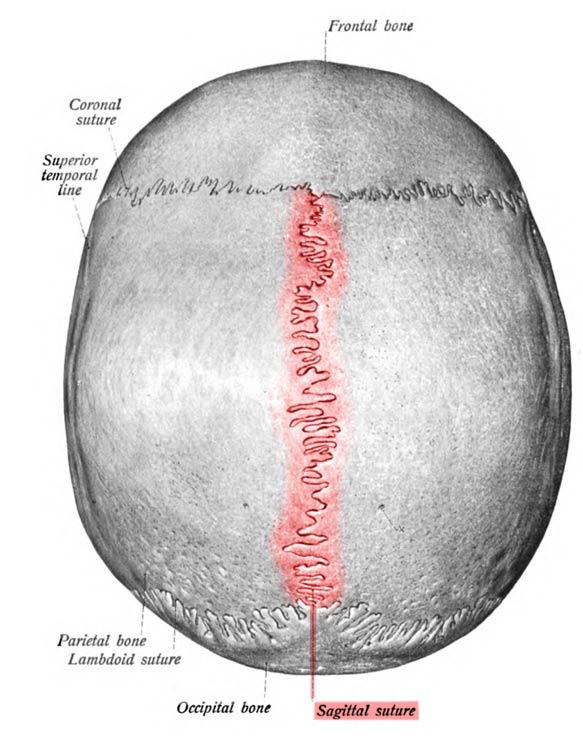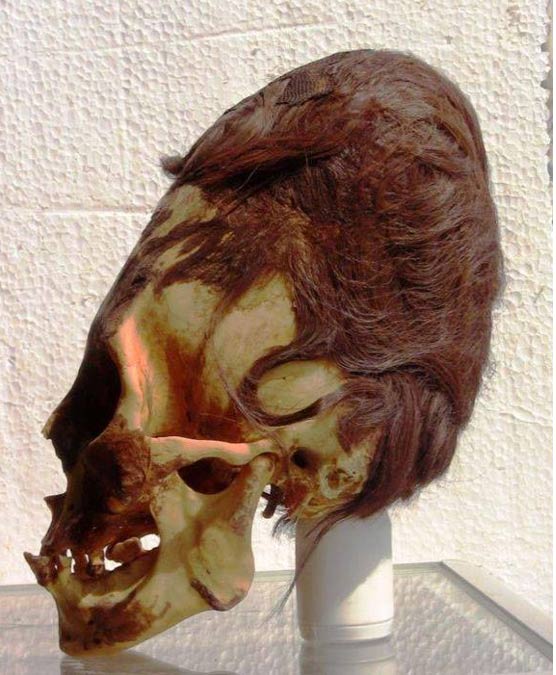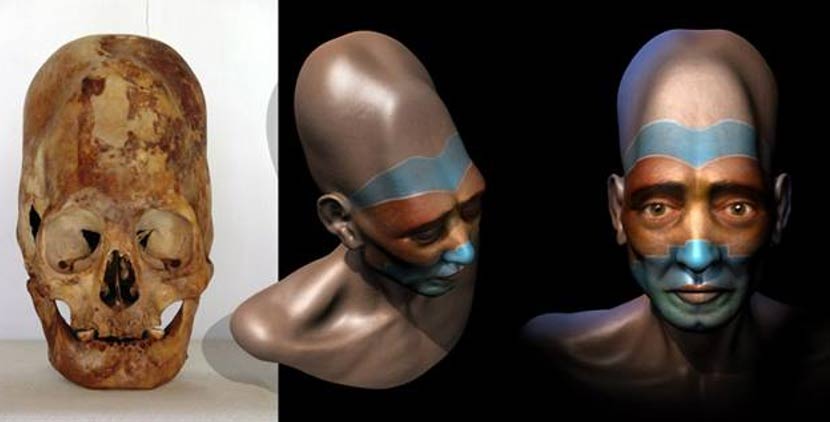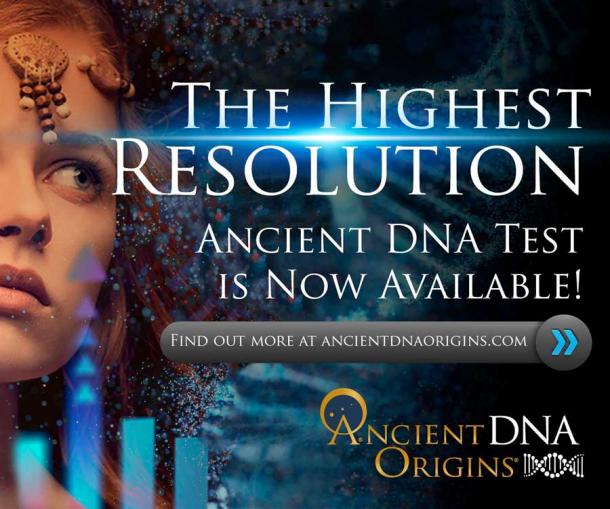New DNA Testing on 2,000-Year-Old Elongated Paracas Skulls Changes Known History
The elongated skulls of Paracas in Peru caused a stir in 2014 when a geneticist that carried out preliminary DNA testing reported that they have mitochondrial DNA “with mutations unknown in any human, primate, or animal known so far”. Now a second round of DNA testing has been completed and the results are just as controversial – the skulls tested, which date back as far as 2,000 years, were shown to have European and Middle Eastern Origin. These surprising results change the known history about how the Americas were populated.
Paracas is a desert peninsula located within Pisco Province on the south coast of Peru. It is here where Peruvian archaeologist, Julio Tello, made an amazing discovery in 1928 – a massive and elaborate graveyard containing tombs filled with the remains of individuals with the largest elongated skulls found anywhere in the world. These have come to be known as the ‘Paracas skulls’. In total, Tello found more than 300 of these elongated skulls, some of which date back around 3,000 years.

Elongated skulls on display at Museo Regional de Ica in the city of Ica in Peru (public domain)
Strange Features of the Paracas Skulls
It is well-known that most cases of skull elongation are the result of cranial deformation, head flattening, or head binding, in which the skull is intentionally deformed by applying force over a long period of time. It is usually achieved by binding the head between two pieces of wood, or binding in cloth. However, while cranial deformation changes the shape of the skull, it does not alter other features that are characteristic of a regular human skull.
In a recent interview with Ancient Origins, author and researcher LA Marzulli describes how some of the Paracas skulls are different to ordinary human skulls:
“There is a possibility that it might have been cradle headboarded, but the reason why I don’t think so is because the position of the foramen magnum is back towards the rear of the skull. A normal foramen magnum would be closer to the jaw line…”

LA Marzulli points to the position of the foramen magnum in a Paracas skull which is also the point at which they drilled in order to extract bone powder for DNA testing.
Marzulli explained that an archaeologist has written a paper about his study of the position of the foramen magnum in over 1000 skulls. “He states that the Paracas skulls, the position of the foramen magnum is completely different than a normal human being, it is also smaller, which lends itself to our theory that this is not cradle headboarding, this is genetic.”
In addition, Marzulli described how some of the Paracas skulls have a very pronounced zygomatic arch (cheek bone), different eye sockets and no sagittal suture, which is a connective tissue joint between the two parietal bones of the skull.

The pronounced cheek bones can be seen in artist Marcia Moore’s interpretation of how the Paracas people looked based on a digital reconstruction from the skulls. Marcia Moore / Ciamar Studio
In a normal human skull, there should be a suture which goes from the frontal plate … clear over the dome of the skull separating the parietal plates - the two separate plates – and connecting with the occipital plate in the rear,” said Marzulli. “We see many skulls in Paracas that are completely devoid of a sagittal suture.
There is a disease known as craniosynostosis, which results in the fusing together of the two parietal plates, however, Marzulli said there is no evidence of this disease in the Paracas skulls.

The sagittal suture, highlighted in red, separates the two parietal plates (public domain)

LA Marzulli shows the top of one of the Paracas skulls, which has no sagittal suture.
DNA Testing
The late Sr. Juan Navarro, owner and director of the Museo Arqueologico Paracas, which houses a collection of 35 of the Paracas skulls, allowed the taking of samples from three of the elongated skulls for DNA testing, including one infant. Another sample was obtained from a Peruvian skull that had been in the US for 75 years. One of the skulls was dated to around 2,000 years old, while another was 800 years old.
The samples consisted of hair and bone powder, which was extracted by drilling deeply into the foramen magnum. This process, Marzulli explained, is to reduce the risk of contamination. In addition, full protective clothing was worn.
The samples were then sent to three separate labs for testing – one in Canada, and two in the United States. The geneticists were only told that the samples came from an ancient mummy, so as not to create any preconceived ideas.

LA Marzulli holding up a replica of one of the Paracas skulls that was tested
Surprising Results
From the samples, only the mitochondrial DNA (DNA from the mother’s side) could be extracted. Out of four hair samples, one of them couldn’t be sequences. The remaining three hair samples all showed a Haplogroup (genetic population group) of H2A, which is found most frequently in Eastern Europe, and at a low frequency in Western Europe. The bone powder from the most elongated skull tested came back as T2B, which originates in Mesopotamia and what is now Syria, essentially the heart of the fertile crescent. “It rewrites history as we know it,” said Marzulli.
“If these results hold,” writes Brien Foerster on his website Hidden Inca Tours, “the history of the migration of people to the Americas is far more complex than we have been told previously.”
If these results are confirmed through further tests, it means that peoples from Europe and the Middle East migrated to the Americas long before it is conventionally believed.
Marzulli said that mainstream academics will probably attack these results by pointing to the fact that he is not a scientist, but he urges any skeptic to replicate the study. “Attack the evidence folks. Go down and get your own samples, pay for a DNA lab and then come back to me with your science… do some science like we’ve done,” he said. The full lab reports of the DNA tests are available in LA Marzulli’s book Nephilim Hybrids.
The results are also consistent with the fact that many of the Paracas skulls still contain traces of red hair, a color that is not natively found in South America, but originates in the Middle East and Europe.
“No academics as far as we can tell can explain why some of the skulls that still have hair are red or even blonde,” writes Brien Foerster, “the idea that this is from time or bleaching has NOW been disproven by 2 hair experts. For the ancient Paracas people, at least, they had blonde to reddish hair that is 30% thinner than NATIVE American hair. It is GENETIC!”

A Paracas skull with its red hair. Credit: Brien Foerster
Extra-terrestrial Hypothesis
Due to the unusual shape and features of the Paracas skulls, there has long been speculation that they are extra-terrestrial in origin, and many have hoped that DNA testing would prove that to be the case.
“As regards an “alien” component or ancestry to the skulls, we may never know,” writes Brien Foerster. “The DNA testing programs can only compare sample DNA with those that are known, and those are held in a huge database called Gentech in the US. Further testing with cooperation from Peruvian archaeologists and the Ministry of Culture are now ongoing.”
Nevertheless, LA Marzulli explained that the DNA results fit perfectly with the hypothesis he has held since before any testing was undertaken. That is that the Paracas people are the Nephilim. The Nephilim, according to ancient Biblical texts, are the offspring of the Fallen Angels and the women of earth, resulting in a hybrid entity, and they said to be based in the area of the Levant, the same place that the Paracas DNA traces to.
Whether or not this hypothesis is correct, the results of the DNA tests are dramatic and history changing and further testing may help to unravel the complex history of the Paracas people.
Next Steps
LA Marzulli and colleagues have plans for further testing and are currently working with Peruvian and American archaeologists. They have verbal permission from the head archaeologist of a Peruvian Museum to take more samples. These will then be presented to the Ministry of Culture for final consent before the samples are taking to US labs for testing. This process is expected to take at least a couple of years to complete.
The full account of the investigation and DNA testing is shown in LA Marzulli’s latest video Watchers 10, which can be ordered here.
Top image: A Paracas elongated skull and an artist’s impression based on a digital reconstruction. Credit: Marcia Moore / Ciamar Studio



















Comments
More likely they are the race that was destroyed prior to the arrival of the Anunnaki (the black-headed people). The question becomes, did the Anunnaki have anything to do with their demise? We do of course know that the surface of the Earth was decimated by the event that caused the Ice Age (100k year nuclear winter) long before the so-called 'dawn of civilization' in Sumer, where the ancient texts describe Sumerians laying mud bricks upon the megalith stone ruins, obviously suggesting the existence of an earlier ill-fated ADVANCED civilization. Add a zero to Plato’s timeline (recognizing the common devious tactic of removing zeros from datelines/ancient texts to obscure the truth) and the destruction of Atlantis/Richat Structure fits the theory very well, and suggests a fair-haired race possibly were the true aboriginal Earthings. Sumerians would probably NOT have called themselves the 'black-headed people' were there other black-haired people on Earth when they arrived.
Nobody gets paid to tell the truth.
Could these be the anunnaki ? Is strange they are found in America and none in Africa, middle east... They are obviously some intelligent extraterrestrial beings. Maybe they lived so many years, and that is the place were they died after a journey.
I can't believe anyone even speaks of Sitchen anymore at all. Only a totally uneducated moron would believe anything he wrote. He admitted, before he died, he lied. There is an interview with the author he admitted this to, online. He was caught when the tablets were all made public and proved he lied. You can search all tablets now online and they are all translated so its proof he lied and exaggerated. Also there is a website put up by a scholar called - sitchen is a liar.com - or something to that effect that shows point by point how and why he lied. The why was for fame and money. He counted on the masses being too lazy to verify what he claimed and he was right. They were lazy and gullible & bought into it and made him a lot of money. The same mentality that makes the stupid masses believe the tabloid papers today.
DNA isn't that funny, and it cannot prove or disprove that a life form as an ET, at least not yet. The skull deformation theory is incorrect, because you can see evidence of binding from African skulls where the practice continues, and both Egyptian and Paracas skulls show no evidence of binding. Secondly, the skulls have a totally different Foramen Magnum placement; also, just look at the skeletons themselves - three fingers, long phalanges.. never seen before in the fossil record (Nazca mummies). Genetic mutation does cause changes in individual cases, but when there are recessive genes from interbreeding, you get long ears, droopy eyes, organ failures, and other traits that natural selection would normally filter out. In the case of an elongated skull, this would allow for a larger brain, and nature would seem to find that a dominant trait.
Skepticism is fine, but trying to apply a model when the evidence is irrefutable that we have been visited is just being close-minded. You academics need to get your elongated heads out of your programming.
DNA is a funny thing, it can do all kinds of things. The Founder Effect, where small groups that become isolated and intermarry, has produced all kinds of strange things, including a unique dwarfism, males that look like girls until teens, blindness, blue people etc. The Egyptian dynasty that includes King Tut have a recurring elongated skull due to the inbreeding common to that culture. The skulls are not as elongated as the paracas, but they could have accentuated it with skull flattening techniques. And Vivian Davis, the extra bone is made by the body in response to the pressure placed on the skull.
Pages